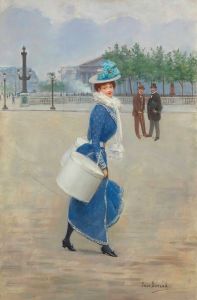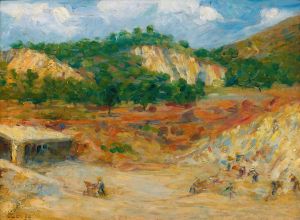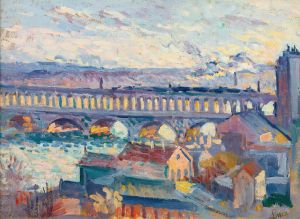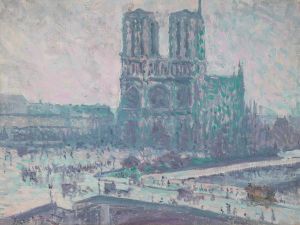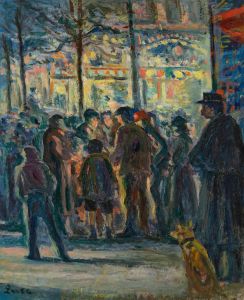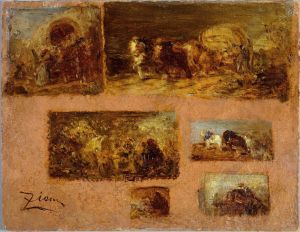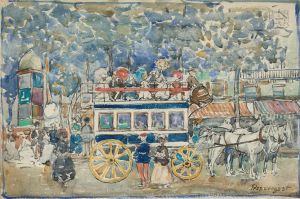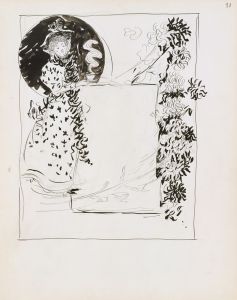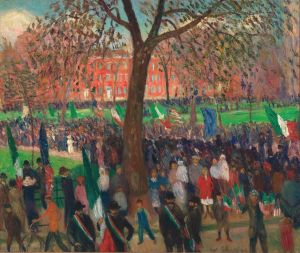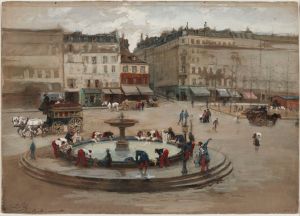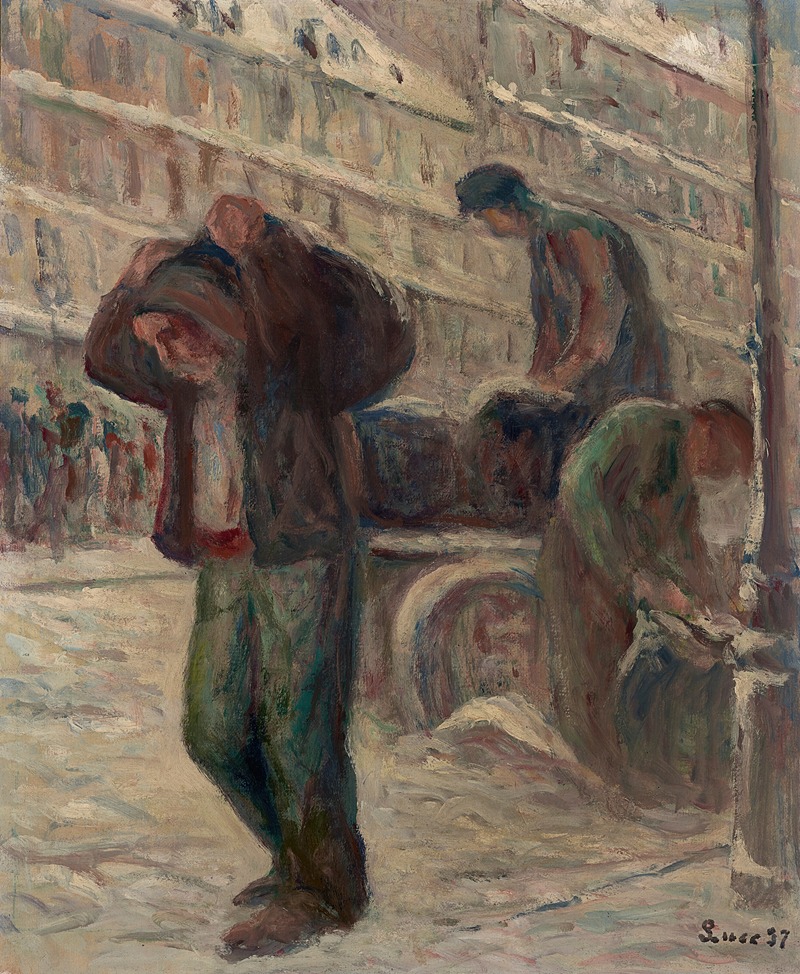
Le Bougnat
A hand-painted replica of Maximilien Luce’s masterpiece Le Bougnat, meticulously crafted by professional artists to capture the true essence of the original. Each piece is created with museum-quality canvas and rare mineral pigments, carefully painted by experienced artists with delicate brushstrokes and rich, layered colors to perfectly recreate the texture of the original artwork. Unlike machine-printed reproductions, this hand-painted version brings the painting to life, infused with the artist’s emotions and skill in every stroke. Whether for personal collection or home decoration, it instantly elevates the artistic atmosphere of any space.
Maximilien Luce was a French Neo-Impressionist artist known for his paintings, illustrations, and engravings. Born on March 13, 1858, in Paris, Luce became associated with the Neo-Impressionist movement, which was characterized by the use of pointillism—a technique involving the application of small, distinct dots of color to form an image. Luce's works often depicted scenes of everyday life, industrial landscapes, and the effects of light.
"Le Bougnat" is one of Luce's notable works, though specific details about this painting are limited. The term "Bougnat" historically refers to individuals from the Auvergne region of France who moved to Paris and often worked as coal merchants or in the hospitality industry, such as running cafes or bistros. This cultural context suggests that Luce's painting might depict a scene related to these individuals or their environment, reflecting his interest in capturing the lives of the working class and urban settings.
Luce's artistic journey began with his training as an engraver, which he pursued from a young age. He later studied painting and became influenced by the works of Camille Pissarro and Georges Seurat, key figures in the Neo-Impressionist movement. Luce's adoption of pointillism allowed him to explore the interplay of light and color in his compositions, a hallmark of the movement.
Throughout his career, Luce was deeply engaged with social and political themes, often expressing his anarchist beliefs through his art. His works frequently highlighted the struggles and dignity of the working class, aligning with his political convictions. This thematic focus is evident in many of his paintings, which portray laborers, industrial scenes, and urban life with empathy and attention to detail.
Luce's involvement with the Neo-Impressionist movement placed him among a group of artists who sought to innovate and expand the possibilities of painting through scientific approaches to color and composition. The movement, initially led by Georges Seurat, emphasized the use of optical mixing, where colors are blended by the viewer's eye rather than on the canvas. This technique allowed artists like Luce to create vibrant, luminous works that captured the essence of their subjects.
Despite the limited information on "Le Bougnat," Luce's broader body of work provides insight into his artistic vision and the themes he explored. His paintings are characterized by their meticulous technique, vibrant color palette, and commitment to depicting the realities of contemporary life. Luce's contributions to the Neo-Impressionist movement and his dedication to social themes have secured his place in the history of modern art.
Maximilien Luce continued to paint and exhibit his works until his death on February 6, 1941. His legacy is preserved in numerous collections and museums, where his paintings continue to be appreciated for their technical skill and poignant social commentary. While specific details about "Le Bougnat" remain scarce, Luce's overall oeuvre reflects his enduring impact on the art world and his commitment to capturing the spirit of his time.





